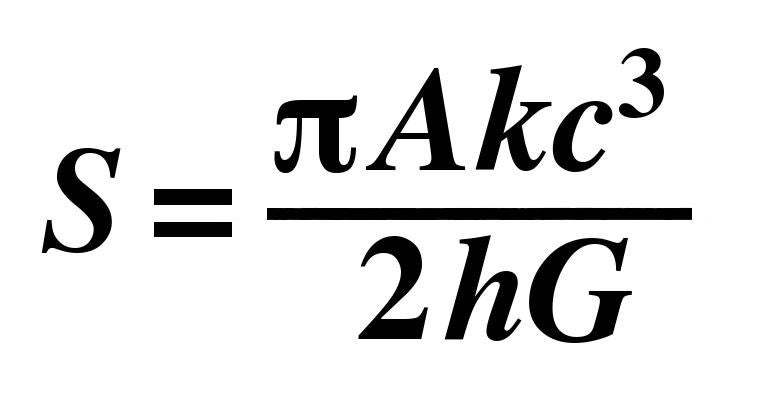Stephen Hawking death: The equation the professor asked to be put on his tombstone
The simple formula encapsulates the profound discovery that became Hawking's life's work
Your support helps us to tell the story
From reproductive rights to climate change to Big Tech, The Independent is on the ground when the story is developing. Whether it's investigating the financials of Elon Musk's pro-Trump PAC or producing our latest documentary, 'The A Word', which shines a light on the American women fighting for reproductive rights, we know how important it is to parse out the facts from the messaging.
At such a critical moment in US history, we need reporters on the ground. Your donation allows us to keep sending journalists to speak to both sides of the story.
The Independent is trusted by Americans across the entire political spectrum. And unlike many other quality news outlets, we choose not to lock Americans out of our reporting and analysis with paywalls. We believe quality journalism should be available to everyone, paid for by those who can afford it.
Your support makes all the difference.Stephen Hawking, who has died at 76, said he knew what he wanted on his gravestone.
The Cambridge professor made clear that he would like what is known as Hawking’s equation carved onto his grave.
The equation contains within it all of the most important parts of Professor Hawking’s most important discovery. It expresses neatly the idea that would come to define his work for the rest of his life: that black holes weren’t entirely black after all, and instead emitted a glow that would become known as Hawking radiation.

That breakthrough led us to new ways of understanding not only black holes but the ways that universe grows and changes over time. And much of it can be expressed in just a few letters:
The S that the equation serves to calculate is entropy: a complicated but significant part of black holes, that can be understood as a measure of how much disorder is present in the system. Sometimes the letter is written with a little “BH” next to it, standing for Professor Hawking and Jacob Bekenstein, the other scientist who did so much to help understand black holes.
The rest gives the important numbers required to calculate that entropy. The h is the Planck constant, so important in quantum mechanics; the G is Newton’s constant, used to understand gravity; the A refers to the area of the event horizon; the c is the speed of light, made so famous by Einstein’s great formula; and the k is Boltzmann’s constant, which is a way of understanding how energy relates to temperature.
All of which may appear to be a little complicated. But, as ever, Professor Hawking gave an incredibly simple explanation of how he arrived at the itself deceptively simple formula.
“In particular, I wondered, can one have atoms in which the nucleus is a tiny primordial black hole, formed in the early universe?” he wrote in 2002, during the celebrations of his 60th birthday. “To answer this, I studied how quantum fields would scatter off a black hole. I was expecting that part of an incident wave would be absorbed, and the remainder scattered.
“But to my great surprise, I found there seemed to be emission from the black hole. At first, I thought this must be a mistake in my calculation. But what persuaded me that it was real, was that the emission was exactly what was required to identify the area of the horizon with the entropy of a black hole.
“I would like this simple formula to be on my tombstone.”

Join our commenting forum
Join thought-provoking conversations, follow other Independent readers and see their replies
Comments